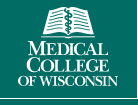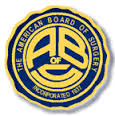If there were some sort of illustration that showed us how much of our brains functions went to operating the hands, it might astonish you. A huge amount of communication and activity between the hands and the brains occurs each day of your life, and when there are nerve injuries it can be tremendously disruptive to your ability to function completely.
As the American Society for the Surgery of the Hand indicates, the nerves are like a “telephone wiring” system in the body which sends and transports messages from the brain and out to every possible location. Just as in a real world setting, if those lines are damaged or downed in some way, communication ceases and messages cannot head back and forth as usual.
Nerves are also, physically, a lot like phone lines with their outer protection and their many inner lines and fibers. Additionally, the various inner lines have different tasks, too, and there are motor nerves for making your body move, sensory nerves that indicate everything from pain to temperature. Any nerve fiber can carry only one message – either sensory or motor, but all nerve tissue is made up of both types of nerves.
Should a nerve be harmed due to injury, pressure, crushing, or stretching, all of the messages stop, too. This can leave you unable to move a limb or experience sensation or feeling in the area where the nerve once communicated. Interestingly enough, the part of the damaged nerve that is closest to the brain does not die when injured. It remains alive and can continue to function and even grow. Though this can develop into a painful condition known as neuroma, it also means that a nerve that has been damaged does have a chance at being restored.
Can Damaged Nerves Come Back to Life?
If a nerve is severed, the various lines and connections can be reconnected through a surgical procedure. However, it is not as simple as it sounds, particularly when speaking about the nerves of the hand, which are thin strands no bigger than threads of yarn.
The good news is that it can be done, but it does have a lengthy recovery process. The initial goal is to get that outer sheath back together in order to encourage the inner nerves to reconnect and restore themselves. This is why any surgeries for nerve injuries demand at least three weeks of “downtime” after the procedure. Even then, the pace of regrowth is very slow, and to prevent any further damage, the patient is discouraged from using the digit or hand during the initial recovery period.
After that, however, there will be the need to use therapy to help the hand or fingers regain flexibility and function.
Your hand surgeon can review the options for nerve repair, and let you know your expected prognosis. With time and work, though, even severed nerves can be recovered or restored to at least partial function and health.
Source
ASSH.org. Nerve Injury. 2015. http://handcare.assh.org/SearchResults/tabid/145/SearchModuleID/1720/sites/1/Default.aspx?SearchTerm=damaged+nerves












